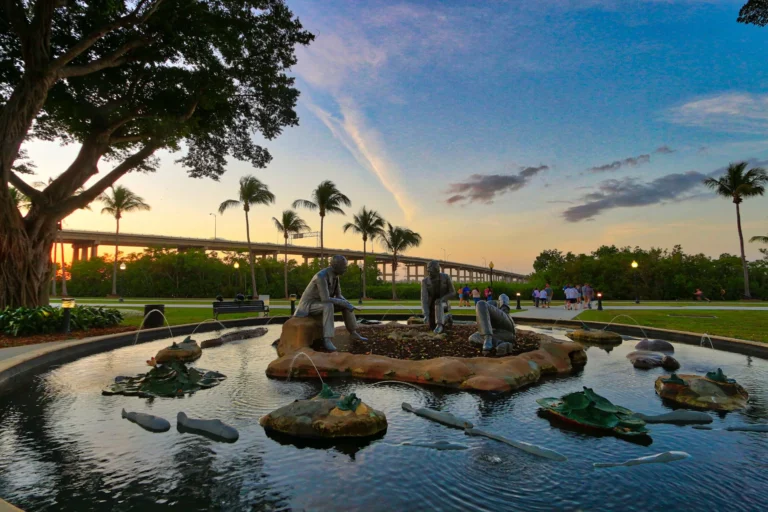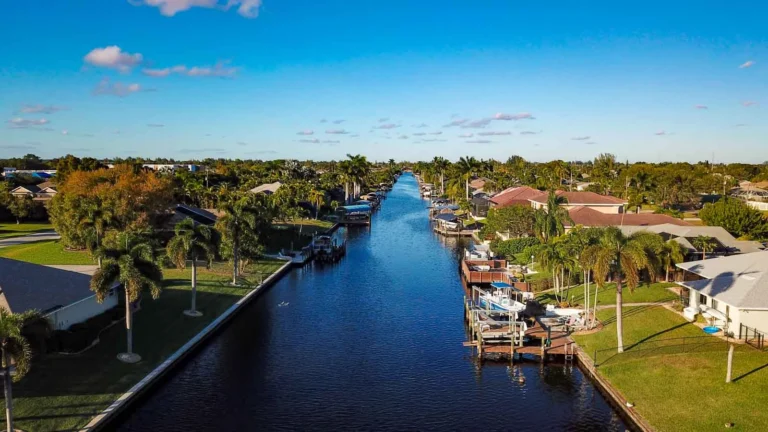Exploring the Racial Makeup of Fort Myers, Florida: A Growing Diverse Community
What is the Racial Makeup of Fort Myers, Florida?
Have you ever wondered about the diverse cultures and communities that make up Fort Myers, Florida? What do the demographics look like, and how have they changed over the years? Through this article, we will explore the racial makeup of Fort Myers, delving into its history, current statistics, and what they mean for residents and visitors alike.
Understanding the Demographics of Fort Myers
Fort Myers, located in Lee County, has transformed significantly over the past few decades. Initially known for its agriculture and fishing industries, the city has become a vibrant hub for retirees and families. As we analyze the racial makeup, we will observe how it reflects broader trends in the United States.
Statistical Overview
As of the latest U.S. Census data, Fort Myers has a population of roughly 86,000 people. The racial composition is a blend of different ethnicities, contributing to Fort Myers’ unique cultural tapestry. The following is a breakdown of the racial demographics:
- White (Non-Hispanic): Approximately 61%
- Hispanic or Latino: About 27%
- Black or African American: Roughly 10%
- Asian: Around 1.6%
- Other Races: Nearly 1.4%
This percentage highlights the significant Hispanic population, which is a vital part of the city’s identity and cultural landscape.
Historical Context of Racial Diversity
Understanding the racial makeup of Fort Myers requires a historical perspective. The city has seen various waves of immigration and migration, particularly from Latin America and the Caribbean. In the late 20th century, the expansion of industries and the appeal of Florida’s climate attracted many residents from northern states as well.
As we reflect on the past, it’s essential to recognize that Fort Myers was also shaped by the civil rights movement, which sought to address inequalities faced by African Americans. Historical events have contributed to the racial dynamics we observe today.
Cultural Influences in Fort Myers
The racial makeup of Fort Myers has led to a rich cultural exchange. Various festivals celebrate this diversity, including:
- The Mardis Gras Festival: Showcasing the city’s lively Hispanic culture with parades and traditional food.
- Black History Month Celebrations: Events focused on the African American community’s contributions and history.
These cultural influences are not just festivities but reflections of the day-to-day life in Fort Myers. Local businesses, art, and cuisine embody the multicultural essence that you can experience firsthand.
Economic Impact of Racial Diversity
The racial composition of Fort Myers plays a crucial role in its economy. A diverse population can lead to a variety of businesses that cater to different communities, promoting local economic growth. For example, we can see how Hispanic-owned businesses have become prominent in the area, offering services and products that resonate with the Latino community.
Moreover, a diverse workforce can attract new job opportunities, enhancing the economic vitality of Fort Myers. As residents engage and collaborate, this composition fosters innovation and creativity.
Challenges and Opportunities
While diversity brings numerous benefits, challenges also arise. Issues such as housing affordability, education equity, and access to healthcare can affect various racial communities differently. Addressing these challenges requires community engagement and proactive policies aimed at inclusivity.
The Future of Fort Myers’ Demographics
As we look ahead, the racial makeup of Fort Myers is likely to continue evolving. With an influx of people moving to Florida for various reasons, future census data may reveal a more complex demographic landscape. This shift can lead to new opportunities for dialogue, cooperation, and growth among the different racial and ethnic groups.
Conclusion
Fort Myers is a dynamic city where racial diversity contributes to its unique character. From its historical roots to the current vibrant mix of cultures, understanding the racial makeup of Fort Myers helps us appreciate the richness of community life. I encourage you to reflect on your own experiences with diversity and share your thoughts in the comments below.
FAQ Section
1. What is the predominant racial group in Fort Myers?
The predominant racial group in Fort Myers is White (non-Hispanic), making up approximately 61% of the population.
2. Why is the Hispanic community significant in Fort Myers?
The Hispanic community is significant due to its size (about 27% of the population) and cultural contributions, enriching the local landscape with festivals, businesses, and traditions.
3. How has Fort Myers’ racial makeup changed over the decades?
Fort Myers has become more diverse over the decades, particularly with a growing Hispanic population, reflecting broader immigration patterns seen in the U.S.
4. Are there any cultural events that celebrate diversity in Fort Myers?
Yes, Fort Myers hosts several cultural events, including Mardis Gras Festival and Black History Month Celebrations, which highlight its diverse community.
5. What challenges does Fort Myers face concerning its diversity?
Challenges include housing affordability, education equity, and access to healthcare, which can impact various communities differently.
Trusted Sources
https://www.census.gov/quickfacts/fact/table/fortmyerscityflorida/PST045221
https://en.wikipedia.org/wiki/Fort_Myers,_Florida
https://www.city-data.com/city/Fort-Myers-Florida.html
https://www.lee.gov/
https://www.nbc-2.com/news/fort-myers-demographics
Feel free to share your thoughts or any experiences related to the diversity in Fort Myers!







